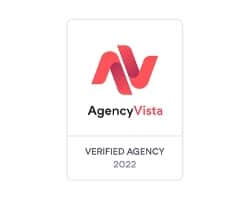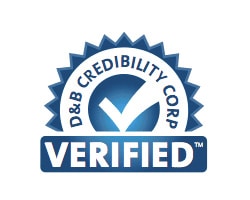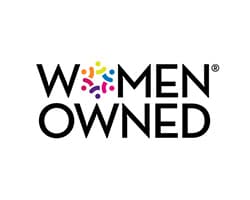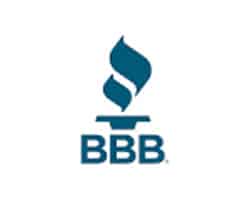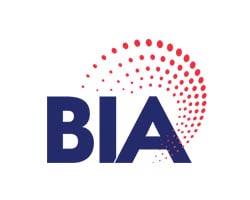You have only seconds to grab someone’s attention in B2B marketing—and even less time to hold onto it. So why do so many companies lead with what they do instead of why it matters?
Here’s the truth: Most B2B messaging strategies fail not because the solution isn’t valuable, but because the messaging doesn’t make that value clear. The language is often too technical, too vague, or too focused on internal priorities instead of customer pain points.
If your messaging isn’t generating leads, closing deals, or differentiating your brand, here’s why—and what you can do about it right away.
Mistake #1: Leading with What You Do Instead of What They Need
Many B2B brands start with product features, capabilities, or accolades because they’re flashy and feel impressive. But your audience isn’t looking for a product—they’re looking for a solution.
Why It Fails:
Features aren’t compelling on their own. Your audience wants to know how your offering solves their specific challenges, not how it works.
What to Do Instead:
Lead with outcomes. Shift the focus to results: Instead of “We help manufacturers reduce downtime by 35%,” try “We offer enterprise asset tracking systems.” Make your value obvious from the first sentence.
Want to turn your messaging into a results-driven narrative? Explore our positioning and storytelling services.
Mistake #2: Saying Everything—and Saying Nothing
You’ve seen this before: a homepage headline that tries to say it all. “Innovative. Scalable. Customer-centric.” It sounds good but means little.
Why It Fails:
Generic buzzwords dilute your message and fail to differentiate you in a crowded market. If your competitors could use the same words, you’re not standing out.
What to Do Instead:
Be specific. Clarify who you serve, what you solve, and why it matters—clearly and concisely. Use language your audience actually uses. Think: “Helping logistics firms streamline last-mile delivery” instead of “We power digital transformation.”
For examples of powerful brand messaging, download our free eBook: The Brand Fix.
Mistake #3: Messaging That Doesn’t Match the Buyer’s Journey
Messaging that hits too soon—or too late—misses the mark.
Why It Fails:
A prospect in the awareness stage doesn’t want a demo. And someone in the decision stage doesn’t want a thought leadership piece on trends.
What to Do Instead:
Tailor your messaging to the stage your buyer is in:
- Awareness: Highlight the problem and what’s at stake.
- Consideration: Offer insights, solutions, and comparisons.
- Decision: Showcase results, ROI, and real-world success stories.
Get real-world insights on aligning messaging to each stage of the buyer journey from our B2B Brand180 podcast, where top B2B branding and marketing experts share strategies that work across complex industries.
Mistake #4: Too Much Jargon, Not Enough Clarity
Yes, your audience is sophisticated. But that doesn’t mean they want to work to understand you.
Why It Fails:
Overcomplicated language adds friction. If your prospect has to decode your message, you’ve already lost them.
What to Do Instead:
Speak like a human. Trade jargon for clarity. Aim for confident, conversational language that informs and builds trust without sounding like a user manual.
Need help refining your voice? Check out Forbes’ guide to common messaging mistakes and how to avoid sounding vague, robotic, or off-brand.
Mistake #5: Messaging That Doesn’t Reflect Your Positioning
If your messaging could apply to any business in your industry, you haven’t nailed your positioning.
Why It Fails:
Lack of clear positioning makes it hard for prospects to understand why they should choose you—and not someone else.
What to Do Instead:
Anchor your messaging in a strong value proposition. Ask yourself:
- What do we do better than anyone else?
- What pain point are we uniquely equipped to solve?
- Why does that matter to our customer?
A clear position = clear messaging = better results.
Learn how to clarify your brand position in our blog on defining your brand story with a strong identity.
Mistake #6: Inconsistent Voice and Messaging Across Channels
Your LinkedIn says one thing. Your website says another. Your sales deck says something completely different.
Why It Fails:
Inconsistency confuses your audience and erodes trust. Mixed messages dilute your brand’s credibility.
What to Do Instead:
Create a central messaging framework that guides every piece of content—website, email, social, sales collateral. That framework should define your value proposition, tone of voice, and key messaging pillars.
Need help building that? We’ve got you covered.
Mistake #7: Skipping the Test-and-Learn Phase
Even great messaging needs validation. If you’re not tracking how your message performs, you’re guessing.
Why It Fails:
Without testing, you don’t know what resonates. And what worked last year may not work now.
What to Do Instead:
A/B test headlines. Compare messaging in campaigns. Ask your sales team what phrases prospects repeat back. Use what you learn to refine and evolve your message over time.
Gartner’s insights offer a deeper look into testing B2B marketing strategies to see what works.
So—What Should You Do Now?
- Audit your messaging. Is it clear, specific, and customer-centric?
- Clarify your positioning. Own what makes you different—and valuable.
- Create a messaging framework. Align every touchpoint with a consistent voice and story.
- Test and refine. Let data guide your decisions, not assumptions.
Let’s Make Your Message Unstoppable
At Millennium Agency, we help B2B brands develop sharp, effective messaging strategies that actually move the needle. From positioning workshops to brand voice development to full messaging frameworks—we turn complexity into clarity.
Ready to build a messaging strategy that actually works? Let’s talk.












